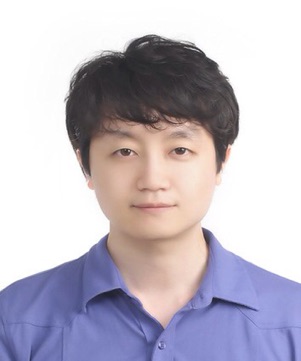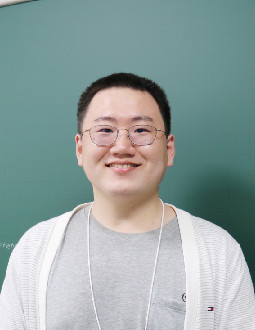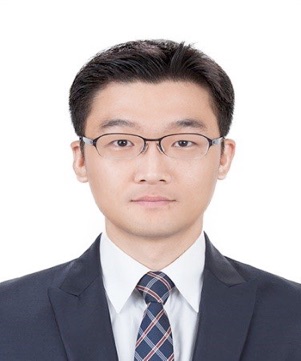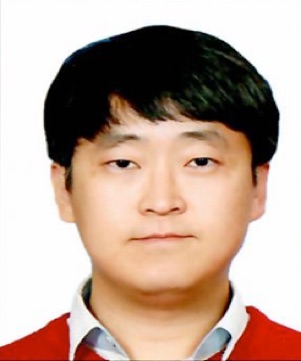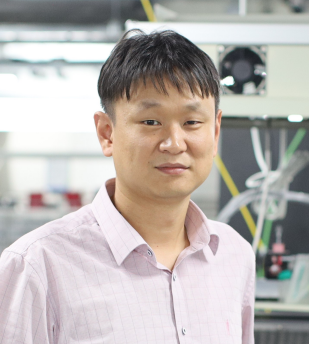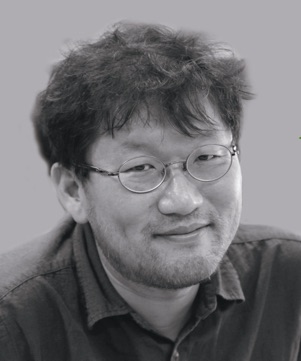(PCS IBS)


Moonjip Park
I study topological phases in strongly correlated electron systems. More specifically, I am interested in unconventional/topological superconductivity, magnetism, disordered systems, and quasicrystals. My past research projects include the higher-order topological insulator phase in twisted bilayer graphene systems and the topological superconductivity in multi-band superconductors. Recently, I am interested in the quantum geometry and topological properties of correlated matters and the novel dynamical behavior characterizing these phases. During the Advanced Study Group, I wish to extend the knowledge of topological phases to various quasiperiodic systems.
Young Woo Son
(KIAS, Korea)
I have studied physics of low dimensional systems using various theoretical and computational machineries. For some times, I also have interested in energy harvesting problems and first-principles computational method developments involved with correlated states. I have been a professor position in the school of computational sciences at Korea institute for advanced study since 2008.
Joung-Real Ahn
(SKKU, Korea)
A milestone in Prof. Joung Real Ahn’s research is the discovery of graphene quasicrystal, which was published as a Cover Figure of Science Journal (2018). The realization of graphene quasicrystal succeeded the research philosophy of Prof. Andre Geim (Graphene, 2010 Nobel Prize in Physics) and Prof. Dan Shechtman (Quasicrystal, 2011 Nobel Prize in Chemistry). In researches of two-dimensional (2D) quantum materials including graphene, h-BN and MoS2, Dirac electrons with a quasiperiodic order was first experimentally observed in a solid, where Dirac electron with a periodic order was first realized in a solid by Prof. Andre Geim. In researches of quasicrystals, wafer-scale single-crystal 2D quasicrystal was first realized using 2D quantum materials. The fabrication method of graphene quasicrystal can be applied to any 2D quantum materials such a h-BN quasicrystal and a MoS2 quasicrystal, a 2D magnetic quasicrystal and a 2D superconducting quasicrystal. The graphene quasicrystal made of twisted bilayer graphene has led to a new research paradigm of twisted multilayer system in 2D quantum material researches including superconductivity in twisted bilayer graphene with a magic angle (Prof. Pablo Jarillo-Herrero, MIT, 2018). The two outstanding researches, graphene quasicrystal and superconductivity in twisted bilayer graphene with a magic angle, are realized using twisted bilayer graphene. Afterward, reports of new exotic physics and nanotechnology using twisted multilayer systems have increased rapidly. The research field of twisted multilayer systems has become one of hot issues in physics, chemistry, material science and nanotechnology.
Nojoon Myoung
(CU, Korea)
I am working on theoretical investigations of quantum transport phenomena in low dimensional electronic systems. In particular, coherent transport in graphene-based quantum interferometry and vertical tunneling in Van der Waals heterostructures are of major interest. My recent research has focused on effects of elastic strain on graphene-based quantum interferometry, aiming at potential applications of graphene for ultrasensitive strain sensors and quantum computing. I am also oriented to numerical simulations for close collaborations with experimentalists in various fields, covering condensed matter physics and semiconductor device physics. From my Ph.D under supervision of Prof. Ihm at CNU, my research career has been specialized in graphene physics for a decade, with postdoc experiences in EU Graphene Flagship(worked at University of Ioannina under supervision of Prof. Lidorikis) and Institute for Basics Science(worked at PCS as a member of Dr. Park's team). Since 2017, I have been in a professorship at the Department of Physics Education, Chosun University.
Youngkuk Kim
(SKKU, Korea)
I am interested in studying condensed matter systems and nano-size materials using diverse theoretical and computational methods. My primary goal is to develop and apply theoretical and computational methods for studies of quantum mechanical properties of solids, combining physics, material science, and computer science. Current principal interest is in applying first-principles calculations to realize new topological phases in exiting materials, two-dimensional materials, and energy materials. Among my main results I would like to highlight: prediction of nodal line semimetals, [Phys. Rev. Lett. 115, 036806 (2015)] and ferroelectric topological insulators [Nano Letters 16, 1663 (2016)]; materials realizations of monopole nodal line semimetals [Phys. Rev. Lett. 121, 106503 (2018)], higher-order topological insulators [Phys. Rev. Lett. 80 (20) 4526 (1998)] and nonsymmorphic Dirac insulator [Science 361, 245 (2018); the theoretical description of the new phenomena – corner states tunneling in a higher-order topological insulator [Carbon 174, 260 (2021)].
Pilkyung Moon
(New York University in Shanghai, China)
Pilkyung Moon is an Assistant Professor of Physics at NYU Shanghai. Prior to joining NYU Shanghai, he was a Research Fellow at the Korea Institute for Advanced Study in 2013-2014 and assistant professor in Department of Physics at Tohoku University in 2011-2013. He holds a PhD from Seoul National University.
My research interests are condensed matter theory and electronic properties of atomically thin films with an emphasis on the moiré interference between layers. I developed theoretical models that can reveal the electronic structures of moiré superlattice, such as twisted bilayer graphene, graphene on hexagonal boron nitride, incommensurate double-walled carbon nanotubes, and even graphene quasicrystals.
Jun-Won Rhim
(Ajou Univ, Korea)
I am a condensed matter theoretician, and my research mostly focuses on topological phases and flat band systems. Recently, I found a new class of flat band systems characterized by the quantum distance, so called the singular flat band. The singular flat band exhibits anomalous Landau level structure, where one can extract the quantum distance information quite easily. I also studied general aspects of the bulk-boundary correspondence, which is at the heart of the topological analysis. Especially one-dimensional systems, I clarified the correct usage of the Zak phase in predicting the existence of the boundary modes. While these works are all related to the geometric properties of the Bloch wave functions, I also investigated many-body phenomena such as magnetism, Kondo lattice, and Wigner crystal.
For additional information, including full publications, please see https://sites.google.com/view/ajou-cmtg
Hee Chul Park
(PCS IBS)
My research interests are focused on studying electron transport in mesoscopic systems such as topological insulators, graphene, 2D materials, nano-electromechanical systems, and superconducting nanostructures. The other interests are non-hermiticity-induced symmetry breaking effect and quantum chaos. Among main results I would like to highlight theory of axion electrodynamics through magnetic ordering on edges of a topological insulator [PNAS 112, 11514-11518 (2015)], gate-tunable spin transport and giant electroresistance in ferromagnetic graphene vertical heterostructures [Scientific reports 6, 1 (2016)], interacting ultracold atomic kicked rotors: loss of dynamical localization [Scientific reports 7, 1 (2017)], mechanically induced thermal breakdown in magnetic shuttle structures [New Journal of Physics 20 (6), 063036 (2018)], Kondo effect in a Aharonov-Casher interferometer [Physical Review B 100 (23), 235413 (2019)], emergent localized states at the interface of a twofold -symmetric lattice [Physical Review Research 2 (3), 033149 (2020)], and more recently higher-order topological corner state tunneling in twisted bilayer graphene [Carbon, 174, 260 (2021)].
Heejun Yang
(KAIST, Korea)
I received his PhD in physics with a subject on graphene by scanning tunneling microscopy and spectroscopy (STM/STS) from Seoul National University (Korea) and University Paris-Sud XI (France, a joint degree) in 2010, and experienced industrial device studies in Samsung Electronics from 2010 to 2012. Then, I conducted my research on graphene spintronics in CNRS/Thales (France) as a postdoc from 2012 to 2014. With my research background on molecular and nanometer-scale studies (in Seoul and Paris) and electric and spintronic device physics (in Samsung and CNRS/Thales), I moved to Sungkyunkwan University (2014~2021) and to KAIST (2021~) and started original device studies with phase engineering of low-dimensional materials. I have proposed novel and conceptual interface devices such as ‘Graphene Barristor’ and ‘Ohmic homojunction contact between semiconductor channel and metal electrodes’. I was awarded the IUPAP Young Scientist Prize in Semiconductor Physics 2018 for my contribution to novel interface devices based on structural, electronic, and quantum-state control with van der Waals layered materials.
